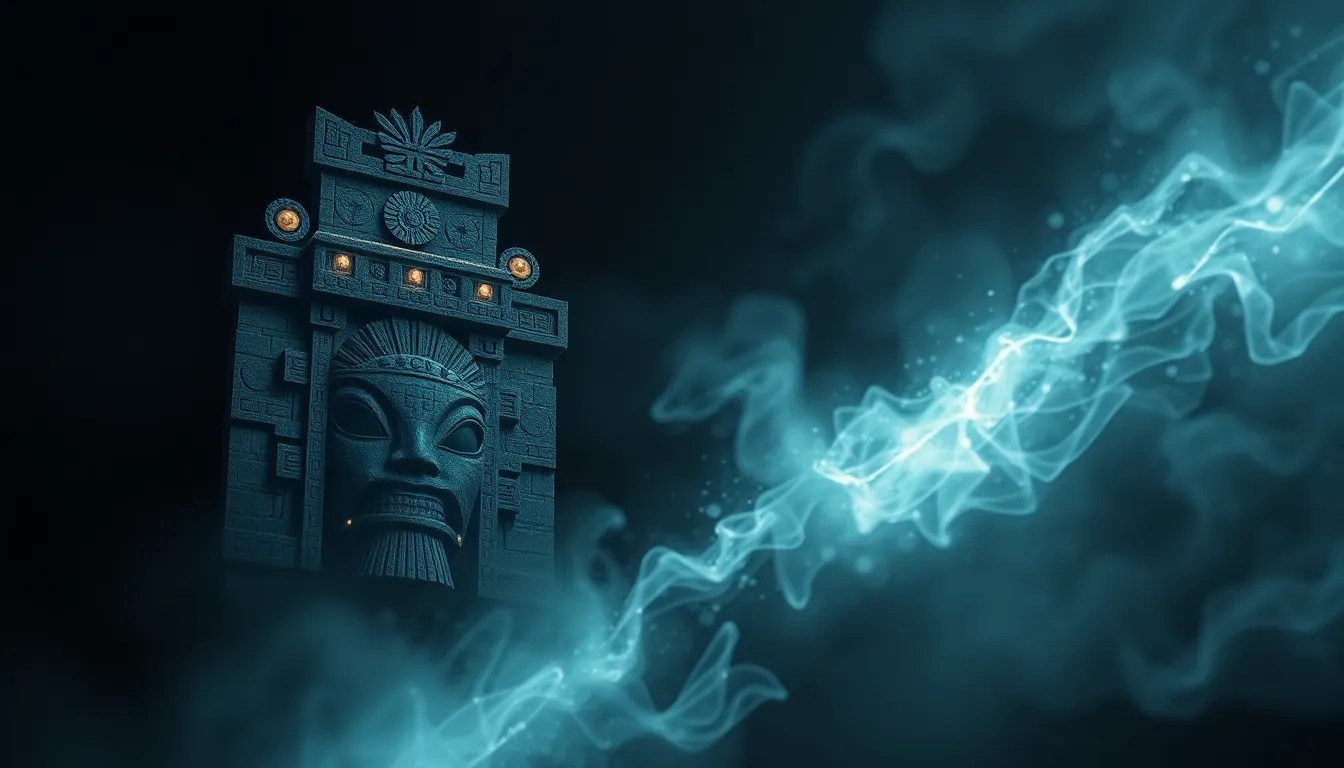The Duality of Existence: Light and Dark in Classic Maya Myths
I. Introduction to Maya Mythology
Maya mythology is a rich tapestry woven from the threads of ancient beliefs, rituals, and stories that define the cultural identity of the Maya civilization. Mythology played a crucial role in Maya society, acting as a guide to understanding the cosmos, nature, and human existence. The myths not only provided explanations for the world around them but also established a moral and ethical framework for the community.
One of the most significant concepts in Maya mythology is duality, which reflects the inherent contrasts present in human experience. This duality is not only a philosophical notion but also a practical reality that permeates various aspects of life, including the balance between light and dark, life and death, and creation and destruction.
II. The Concept of Duality in Maya Beliefs
In Maya thought, duality is fundamental and can be seen as a principle that governs the universe. This concept embodies the idea that opposites coexist and are interdependent, creating a dynamic balance. The interplay between light and dark serves as a symbolic representation of various opposing forces that shape existence.
Some key aspects of duality in Maya beliefs include:
- Cosmic Balance: The Maya viewed the cosmos as a harmonious system where every element played a vital role.
- Interconnectedness: Light cannot exist without dark, and vice versa; each enhances the understanding of the other.
- Cycles of Life: The cyclical nature of life, death, and rebirth is reflected in the day-night cycle and seasonal changes.
III. Key Deities Representing Light
The Maya pantheon includes several deities associated with light, symbolizing creation, knowledge, and life. Among the most prominent are:
- Itzamná: Often regarded as the supreme deity, Itzamná represents the sky, wisdom, and the sun. He is associated with creation and is believed to have brought order to the universe.
- Kinich Ahau: The sun god, Kinich Ahau, embodies the power of the sun and is often depicted as a benevolent figure who brings warmth and light to the world.
- Chac: The rain god, Chac, is vital for agriculture and life, representing the nourishing aspects of rain and the cycle of growth.
These deities played essential roles in rituals and ceremonies, underscoring the significance of light in maintaining cosmic order and human prosperity.
IV. Key Deities Representing Darkness
Conversely, the Maya mythology also includes formidable deities connected to darkness, representing chaos, night, and the underworld. Significant figures include:
- Tezcatlipoca: Known as the god of night and sorcery, Tezcatlipoca embodies the darker aspects of existence. He is often depicted as a trickster who challenges the status quo and represents fate and conflict.
- Yum Cimil: The god of death and the underworld, Yum Cimil oversees the realm of Xibalba, emphasizing the inevitability of death and the mysteries of the afterlife.
- Ek Chuah: A god of war and trade, also associated with darkness, Ek Chuah is vital in understanding the duality of conflict and prosperity.
These deities illustrate the importance of recognizing and respecting the darker aspects of life, which are integral to the balance of existence.
V. Creation Myths and the Balance of Forces
Maya creation myths often highlight the conflict and harmony between light and dark, illustrating the ongoing struggle that leads to the formation of the world. One of the most famous creation stories involves the Hero Twins, Hunahpú and Xbalanqué, who journey to the underworld, Xibalba, facing numerous challenges from dark forces.
Key themes in these myths include:
- Conflict: The trials faced by the Hero Twins symbolize the struggle between opposing forces.
- Resurrection: Their eventual victory and resurrection reflect the cyclical nature of life, emphasizing rebirth and new beginnings.
- Balance: The coexistence of light and dark is necessary for the creation and sustenance of life.
VI. The Underworld: Xibalba and Its Significance
Xibalba, the Maya Underworld, is a place deeply associated with darkness, chaos, and the afterlife. It is described as a realm of trials, where souls undergo tests before reaching their final destination. Xibalba’s significance in Maya thought is multifaceted:
- The Journey of Souls: The path through Xibalba symbolizes the passage from life to death, reflecting the duality of existence.
- Representation of Fear and Respect: Xibalba embodies the fear of death and the unknown, yet it is also respected as part of the natural cycle of life.
- Mythical Encounters: Many myths include encounters with deities in Xibalba, highlighting the importance of facing darkness to achieve enlightenment.
VII. Symbolism of Light and Dark in Rituals and Art
The themes of light and dark permeate Maya art and architecture, where they are often symbolically represented. In rituals, the duality is expressed through various practices:
- Art: Murals, pottery, and sculptures often depict scenes of duality, showcasing both light and dark deities.
- Architecture: Temples and pyramids are designed with orientations that align with celestial events, signifying the importance of light in rituals.
- Rituals: Ceremonies often involve offerings and prayers to both light and dark deities, acknowledging their roles in the balance of existence.
VIII. Conclusion: The Legacy of Duality in Maya Culture
The duality of light and dark remains a vital aspect of contemporary Maya identity, reflecting the ongoing relevance of these ancient beliefs. Understanding the balance of these forces offers insight into the complexities of human experience and the natural world.
In summary, the exploration of light and dark within Maya mythology reveals a profound understanding of existence that transcends time. It invites us to appreciate the dualities within our own lives and the world around us, reminding us that both light and dark are essential for a complete understanding of the human condition.



